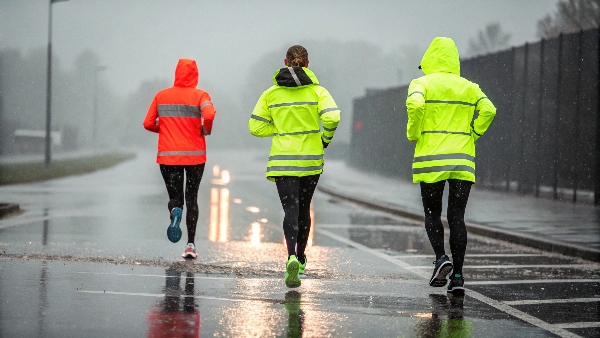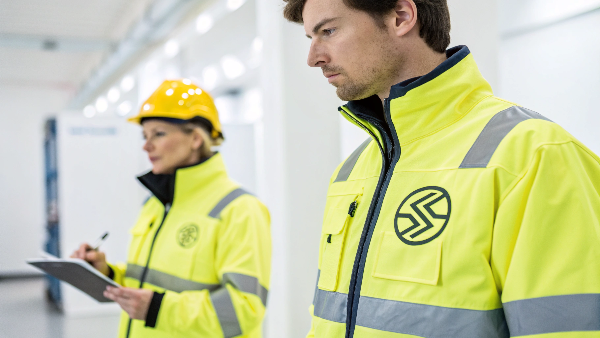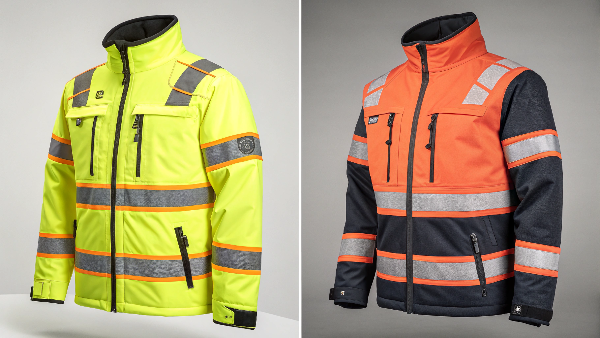Workplaces can be risky. Injuries are a real threat. Safety products are key to keeping everyone safe on the job.
Industrial safety products include PPE like helmets, goggles, gloves, and high-visibility clothing. They protect workers from head to toe against various hazards.

Understanding the different types of safety gear is the first step. So, let's explore these categories further to see how they protect workers effectively. This knowledge helps businesses like yours, and partners like my client Danny Cheng in California, make informed decisions for their teams.
What are examples of safety items?
Unsure about specific safety gear? This can lead to poor choices. Knowing examples helps select the right protection for your team.
Examples include hard hats1 for head impact, safety glasses2 for eye hazards, respirators for breathing protection, and safety vests for visibility.
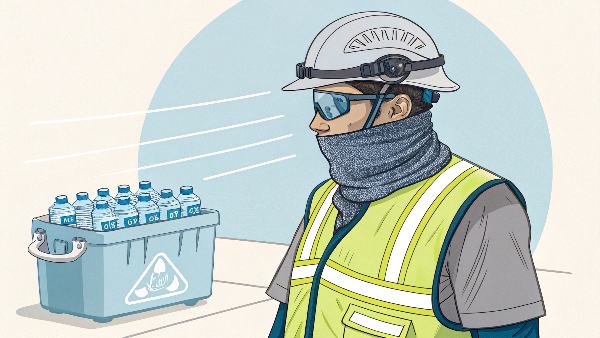
Let's dive deeper into these examples. When I talk with clients, they often ask for common items that cover major risks. We see these items used across many industries.
Protecting Your Head and Eyes
Hard hats are a must in places like construction sites. They protect against falling objects or bumping your head. Safety glasses or goggles are also vital. They shield eyes from flying particles, chemicals, or even bright light. I've seen too many near misses where safety glasses saved someone's sight.
Guarding Your Hands and Feet
Hands are often exposed to cuts, chemicals, or extreme temperatures. So, the right gloves are very important. Safety footwear, like steel-toed boots, protects feet from heavy falling objects or sharp items on the ground.
Ensuring You`re Seen and Heard
In noisy places, earplugs or earmuffs protect hearing. And for visibility, especially in low light or near traffic, high-visibility clothing3 is crucial. At Vissafetywear, we specialize in this. Our high-visibility vests, jackets, and trousers ensure workers are seen, which prevents accidents. Many of our clients, who manage large teams in logistics or roadwork, rely on these garments.
Here's a simple table:
| Hazard Type | PPE Example | Body Part Protected |
|---|---|---|
| Impact from above | Hard Hat | Head |
| Flying particles | Safety Glasses | Eyes |
| Loud Noise | Earplugs/Earmuffs | Ears |
| Harmful Dust/Fumes | Respirator | Respiratory System |
| Cuts/Abrasions | Safety Gloves | Hands |
| Poor Visibility | High-Visibility Vest | Body |
| Falling Objects | Safety Boots | Feet |
How many types of safety are there in industry?
Overwhelmed by safety options? This confusion can be dangerous. Grouping them into types makes it much clearer to manage.
Safety in industry is often categorized by the body part protected or the type of hazard. Major types include head, eye, respiratory, hand, body, and fall protection.
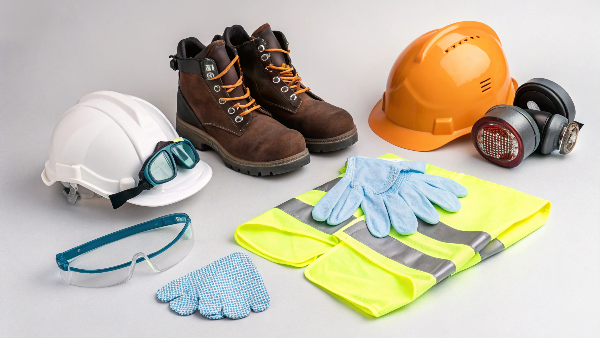
Thinking about types of safety4 helps us organize our approach. It makes sure we cover all potential risks. At Vissafetywear, we find this helps our clients understand their needs better.
Protection from Head to Toe
The most common way to categorize safety products is by the part of the body they protect.
- Head Protection: Helmets, bump caps.
- Eye and Face Protection: Goggles, safety glasses, face shields.
- Hearing Protection: Earplugs, earmuffs.
- Respiratory Protection: Dust masks, respirators with filters.
- Hand Protection: Various gloves for cuts, chemicals, heat.
- Body Protection: Coveralls, aprons, and critically, high-visibility clothing. This is our expertise at Vissafetywear, ensuring workers are seen and safe.
- Foot Protection: Safety shoes and boots.
- Fall Protection: Harnesses, lanyards, and anchoring systems for those working at heights.
Hazard-Specific Safety Measures
Another way to look at it is by the type of hazard. For example, there's chemical safety, which requires specific types of gloves, suits, and respirators. Electrical safety needs insulated tools and gear. Fire safety involves fire-resistant clothing and extinguishers. Our high-visibility clothing often incorporates fire-resistant properties for industries like oil and gas. We work to meet specific hazard requirements, like those Danny Cheng faces with his clients in demanding North American sectors.
The Role of High Visibility Garments
Within body protection, high visibility garments5 are a special type. They are designed to make the wearer stand out against any background. This is vital for anyone working near moving vehicles or equipment, day or night. Our Vissafety products meet standards like EN ISO 20471 and ANSI/ISEA 107.
What are the safety equipments in industry?
Wondering what equipment counts as "safety"? Misunderstanding this can leave gaps. Safety equipment covers a broad range of tools and gear.
Safety equipment includes personal protective equipment (PPE), emergency response tools like fire extinguishers and first aid kits, and collective protection like safety barriers.
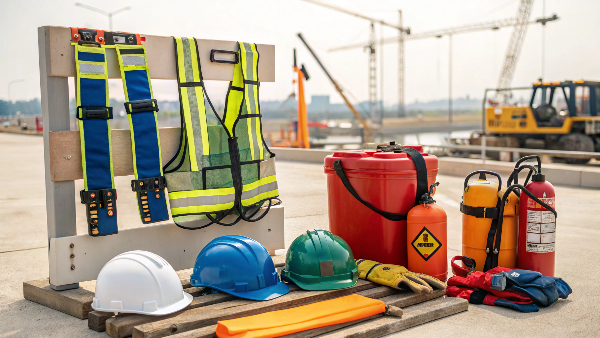
It's useful to think about safety equipment in broad categories. This helps ensure a comprehensive safety plan for any industrial setting. From my experience as a manufacturer, clarity here is key for our clients.
Personal Protective Equipment (PPE) Deep Dive
PPE is equipment worn by individuals to reduce their exposure to hazards. This is what most people think of first. It includes everything from hard hats, safety glasses, and gloves to respirators and safety footwear. A very important part of PPE, especially for outdoor or roadside workers, is high-visibility clothing. At Vissafetywear, we manufacture a wide range of these garments. We focus on quality and compliance with international standards. Our customizable options mean companies can get exactly what they need.
Collective and Emergency Safety Equipment
Beyond PPE, there's collective protection. These are measures that protect multiple people at once. Examples are machine guards, safety nets, guardrails, and ventilation systems. Then there's emergency safety equipment. This includes fire extinguishers, first aid stations, eyewash stations, and emergency showers. These items are crucial for responding quickly if an incident does happen. They don't prevent the hazard itself, but they limit the damage.
Vissafetywear: Your Partner in PPE
While we at Vissafetywear focus on high-visibility PPE, we understand it's part of a larger safety system. Our clients, from large construction firms to brands distributing safety wear, need reliable PPE. That's what we provide – quality, certified garments that workers can depend on. We ensure our materials, like reflective tapes and fabrics, are top-notch.
What are the 5 types of safety?
Looking for a simple safety framework? Complex systems are hard to recall. Knowing key types helps focus efforts effectively on protection.
While classifications vary, five common PPE categories are head, eye/face, respiratory, body (including high-visibility), and hand/foot protection.
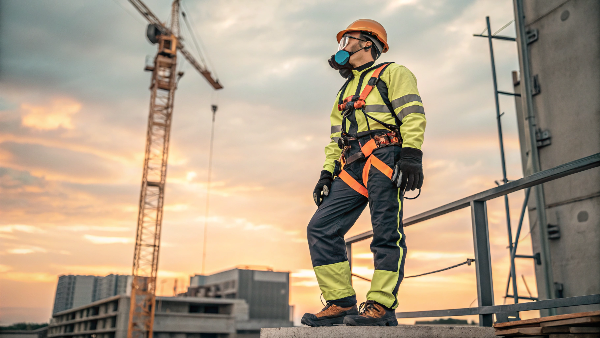
Let's break this down. When I talk about types of safety equipment, focusing on these core categories helps many of my clients. It makes it easier to assess needs and ensure complete coverage.
Core PPE Categories for Overall Safety
- Head Protection: This is about preventing injuries from falling objects, bumps, or electrical shocks. Hard hats are the main item here.
- Eye and Face Protection: This guards against flying particles, chemical splashes, radiation, or glare. Safety glasses, goggles, and face shields fall into this category.
- Respiratory Protection: This is vital where there are airborne contaminants like dust, fumes, gases, or vapors. Masks and respirators are key.
- Body Protection: This includes protection against cuts, heat, chemicals, and, very importantly, lack of visibility. This is where Vissafetywear shines with our high-visibility jackets, vests, trousers, and coveralls. These items are essential for making workers noticeable.
- Hand and Foot Protection: Hands need protection from cuts, punctures, chemicals, and temperature extremes, so various gloves are used. Feet need protection from falling objects, sharp surfaces, and slips, which safety boots and shoes provide.
Beyond PPE: A Broader Safety View
Sometimes, people also talk about 5 types of safety in terms of a safety management system:
- Hazard Identification: Finding what could cause harm.
- Risk Assessment: Understanding how likely harm is and how severe it could be.
- Control Measures: Implementing steps to eliminate or reduce risk. PPE is a key control measure.
- Emergency Preparedness: Planning for what to do if something goes wrong.
- Safety Training and Culture: Ensuring everyone knows how to work safely and values safety.
How Vissafety Addresses Body Protection
For body protection, especially visibility, we at Vissafetywear offer many solutions. Our products meet standards like ANSI/ISEA 107 for North America and EN ISO 20471 for Europe. We also offer eco-friendly material options, which is increasingly important.
What are three items of safety equipment?
Need quick safety item examples? Generic lists aren't always helpful. Specific examples show their direct workplace benefits clearly.
Three common items are hard hats for impact, safety glasses for debris, and high-visibility vests to ensure workers are seen.
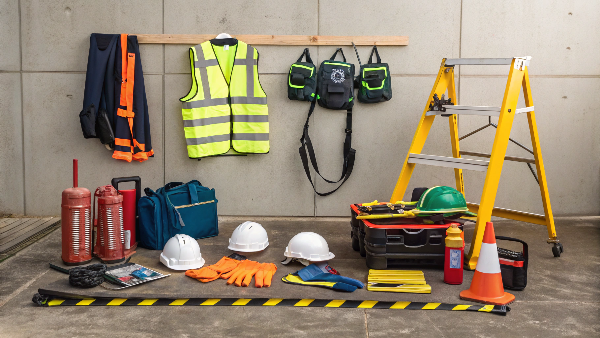
These three items are so common because they address very frequent and basic workplace hazards. I've seen them save people from injury countless times in my years in this industry.
The Essential Hard Hat
A hard hat is a symbol of safety in many industries, like construction and manufacturing. Its main job is to protect the head from falling objects. It can also protect from bumping into fixed objects or from electrical shock if it's rated for that. Choosing the right type of hard hat for the specific risks is important. We always advise clients to assess their specific site hazards.
Why Safety Glasses Are Non-Negotiable
Eye injuries are very common but also very preventable. Safety glasses or goggles protect against flying particles, dust, chemicals, and even harmful light. I always emphasize to workers and managers that wearing safety glasses should be a habit. Even a small particle can cause serious damage. It's a small piece of equipment that makes a huge difference.
The Critical Role of High-Visibility Vests
This is an area very close to my heart and our business at Vissafetywear. High-visibility vests, and other high-vis garments, are essential for anyone working near traffic or moving machinery. This includes road crews, construction workers, airport ground staff, and warehouse teams. The bright colors and reflective tapes make the wearer stand out, especially in low light or bad weather. This dramatically reduces the risk of being struck. We produce millions of these items, and each one plays a role in someone's safety. We work closely with clients like Danny Cheng to provide compliant and durable high-vis gear for the North American market.
What are 5 examples of safety needs?
Unclear about what drives safety choices? Ignoring needs leads to inadequate protection. Identifying needs ensures correct gear selection.
Five safety needs include protection from falling objects, eye injuries from particles, respiratory issues from dust/fumes, hand cuts, and being visible in low light.
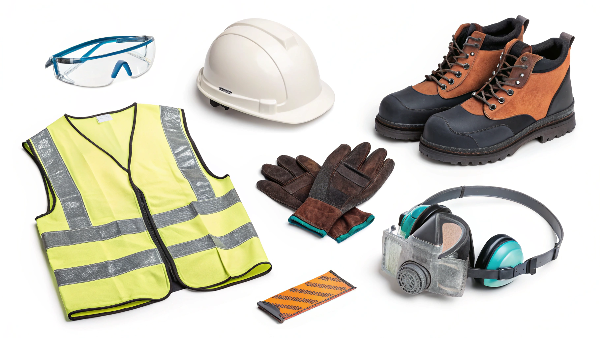
Understanding these fundamental safety needs is the first step to creating a safe work environment. Each need points directly to a type of hazard and, consequently, the right protective equipment.
Meeting the Need for Head and Eye Safety
- Need for Head Protection: In environments like construction sites or warehouses, there's a constant risk from falling tools, materials, or accidental bumps. This creates a clear need for hard hats or bump caps. It's about protecting the brain, which is critical.
- Need for Eye Protection: Many industrial tasks generate flying debris, dust, sparks, or chemical splashes. This creates an urgent need for safety glasses, goggles, or face shields. Protecting vision is a top priority.
Addressing Respiratory and Hand Hazards
- Need for Respiratory Protection: Workers in areas with dust (like woodworking or grinding), fumes (welding), vapors (painting), or harmful gases need protection for their lungs. This translates to a need for appropriate respirators or masks. Long-term exposure can cause serious health issues.
- Need for Hand Protection: Hands are often the closest part of the body to the work being done. This exposes them to cuts, punctures, chemical burns, extreme temperatures, or abrasions. So, there's a strong need for various types of safety gloves designed for specific tasks.
Fulfilling the Critical Need for Visibility
- Need for Visibility: This is a crucial need for anyone working outdoors, near roads, in warehouses with vehicle traffic, or in low-light conditions. The need is to be seen by drivers and equipment operators to prevent accidents. This is where high-visibility safety apparel (HVSA) from Vissafetywear comes in. Our vests, jackets, and trousers are designed with fluorescent materials and retroreflective tape to meet standards like ANSI/ISEA 107 and EN ISO 20471, ensuring workers are conspicuous. This is a major focus for us, as it directly saves lives.
What is safety with an example?
Is "safety" just a vague concept? This thinking can undermine its importance. A clear example makes safety tangible and easy to understand.
Safety is preventing harm. For example, a construction worker wearing a hard hat is practicing safety to prevent head injury from falling debris.
[image placeholder]
Safety isn't just a rulebook; it's a practical way of working and living to avoid getting hurt. I always try to make this clear to everyone I work with, from my team at Vissafetywear to our global clients.
Defining Workplace Safety
In simple terms, workplace safety means creating and maintaining an environment where workers are protected from hazards that could cause injury or illness. It's about identifying risks and taking steps to remove or reduce them. This involves using the right equipment, following procedures, and being aware of your surroundings. Safety is a proactive effort. It's about thinking ahead to prevent problems.
Safety in Action: Real-World Scenarios
Let's expand on the hard hat example. Imagine a worker on a busy construction site. Without a hard hat, a small falling bolt could cause a serious head injury, leading to time off work, medical bills, and pain. By wearing the hard hat, the worker actively practices safety and significantly reduces that risk.
Another example, which is core to our business at Vissafetywear, is a road maintenance worker. At dusk, visibility is poor. If this worker wears dark clothing, they are very hard for drivers to see. But if they wear a high-visibility jacket with reflective stripes, they become much more noticeable. This simple act of wearing the right garment is safety in action. It dramatically lowers the chance of being hit by a vehicle.
Proactive Safety: A Vissafety Principle
At Vissafetywear, we believe safety is an ongoing commitment. It’s not just about selling products. It’s about understanding the risks our clients’ employees face. We ensure our high-visibility clothing meets or exceeds standards like EN ISO 20471 and ANSI/ISEA 107. This proactive approach to quality and compliance is fundamental to how we support workplace safety. We want every worker wearing our gear to feel confident they are well-protected.
What are OSHA standards for general industry?
Confused by regulations like OSHA's? Ignoring them can bring hefty fines. Understanding standards ensures compliance and worker safety for everyone.
OSHA standards for general industry6 (29 CFR 1910) cover diverse topics including PPE, hazard communication, machine guarding, and electrical safety, aiming to protect workers.
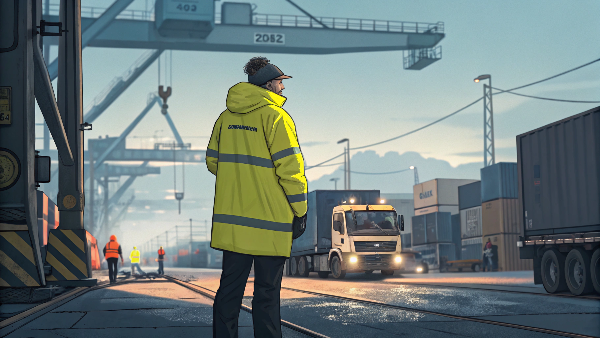
OSHA, the Occupational Safety and Health Administration, sets and enforces standards in the United States. These rules are there to make sure employers provide safe and healthful working conditions. While OSHA is specific to the US, its principles are similar to safety bodies worldwide.
Understanding OSHA's Role in Workplace Safety
OSHA's general industry standards (officially titled 29 CFR Part 1910) are a comprehensive set of rules. They cover a vast range of workplace activities and hazards. The goal is simple: to prevent workplace injuries, illnesses, and deaths. Employers are responsible for knowing these standards and making sure their workplaces comply. This includes things like providing safety training, keeping records of injuries, and ensuring equipment is safe. For us at Vissafetywear, understanding standards like ANSI/ISEA 1077, which OSHA often references for high-visibility apparel, is key to serving our US clients like Danny Cheng.
Key OSHA Requirements for PPE
Subpart I of the OSHA 1910 standards deals specifically with Personal Protective Equipment8. Some key points include:
- Hazard Assessment: Employers must assess the workplace to determine if hazards are present that require PPE.
- PPE Selection: Employers must select and have each affected employee use the types of PPE that will protect them from the identified hazards.
- Training: Employers must provide training to each employee who is required to use PPE. This includes when PPE is necessary, what PPE is necessary, how to properly put it on, take it off, adjust, and wear it, its limitations, and its proper care and disposal.
- Payment: In most cases, employers must pay for PPE.
Global Standards and Vissafety's Compliance
While OSHA is US-based, other regions have their own standards. For example, in Europe, EN ISO 20471 is the standard for high-visibility clothing. At Vissafetywear, we manufacture products that comply with these major international standards, including ANSI/ISEA 107 for the US market. This ensures that our clients, wherever they are, receive products that meet stringent safety requirements. Our R&D lab and triple inspection process help us maintain this high level of compliance, offering peace of mind to businesses that prioritize worker safety.
Conclusion
In short, using the right industrial safety products, from head to toe, is vital. It protects workers and ensures compliance, keeping businesses strong.
-
Discover the various types of hard hats and their specific applications to ensure safety on construction sites and beyond. ↩
-
Explore this link to find top-rated safety glasses that ensure maximum eye protection in various work environments. ↩
-
Learn about the critical role of high-visibility clothing in preventing accidents and ensuring worker safety in low-light conditions. ↩
-
Understanding the various types of safety can help you choose the right protective equipment for your needs. ↩
-
Explore the significance of high visibility garments in enhancing safety for workers in hazardous environments. ↩
-
Explore this link to gain a comprehensive understanding of OSHA standards, ensuring compliance and enhancing workplace safety. ↩
-
Discover the significance of ANSI/ISEA 107 in high-visibility apparel standards, crucial for worker safety in various industries. ↩
-
Learn about the essential requirements for PPE under OSHA to protect workers effectively and ensure compliance. ↩

